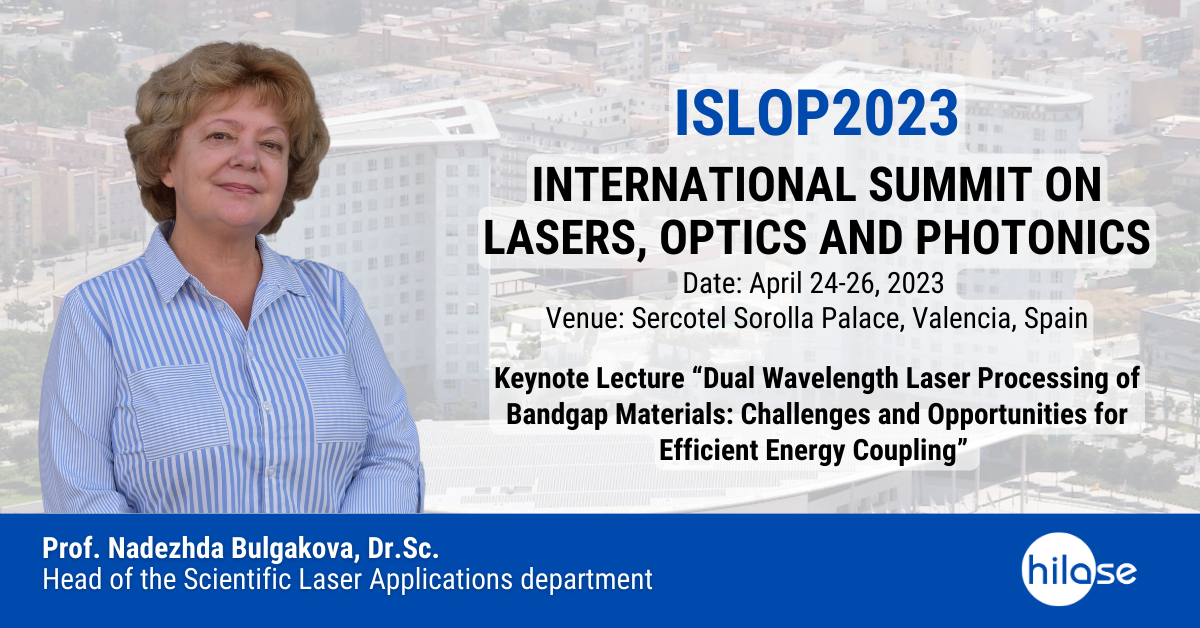Nadezhda Bulgakova, Head of the Scientific Laser Application department (SLA), has participated as a Keynote Speaker at the International Summit on Lasers, Optics, and Photonics (April 24-26, 2023, Valencia, Spain).
The objectives of this Conference were to share knowledge on improved understanding and state-of-the-art developments in the field. The conference organizer, President of Art Photonics GmbH, Germany Dr. Viacheslav Artyushenko, has developed an attractive program of lectures and sessions with well-balanced input from the sectors of academia and industry with the participation of policymakers.

Nadezhda Bulgakova gave the Keynote Lecture titled “Dual Wavelength Laser Processing of Bandgap Materials: Challenges and Opportunities for Efficient Energy Coupling” where she summarized the latest results obtained by the SLA team in the frames of the BIATRI project.
Abstract
Traditionally, monochromatic laser beams are used for material processing, modifications of structural, optical, mechanical, conductive, and thermal properties of different materials, and for designing new nanostructured systems. So far, there are a limited number of studies of bi-chromatic laser irradiation of materials, which indicate significant advantages for laser processing that includes improving the quality of surface nanostructuring, enhanced efficiency of nanoparticle production, improvement of the laser-induced breakdown spectroscopy (LIBS) signals, achieving a much better quality of thin films produced by pulsed laser deposition, and others. However, understanding these advantages is still rather intuitive and the phenomenon itself is poorly investigated.
Systematic theoretical and experimental studies have been performed to explore the excitation of two types of bandgap materials, a wide bandgap dielectric (fused silica) and a semiconductor (silicon), with dual-wavelength ultrashort laser pulses. Both surface and volumetric irradiation regimes were investigated with two laser beams at different wavelengths acting simultaneously and successively, with variable separation time between the pulses. Two femtosecond lasers were used in experiments, PHAROS from Light Conversion and Astrella from Coherent at their fundamental and second harmonics. The most advanced up-to-date theoretical models were used for the description of laser light absorption on material surfaces and in bulk under specific experimental conditions. Details of the models and modeling results will be presented with a rigorous analysis of nonlinear effects and free-electron plasma dynamics responsible for enhanced absorption of bi-color laser light as compared to monochromatic laser pulses. The experimental and numerical data are in good agreement and demonstrate that bi-chromatic laser light can be an effective tool for achieving highly efficient material processing with better control of energy deposition to materials.









